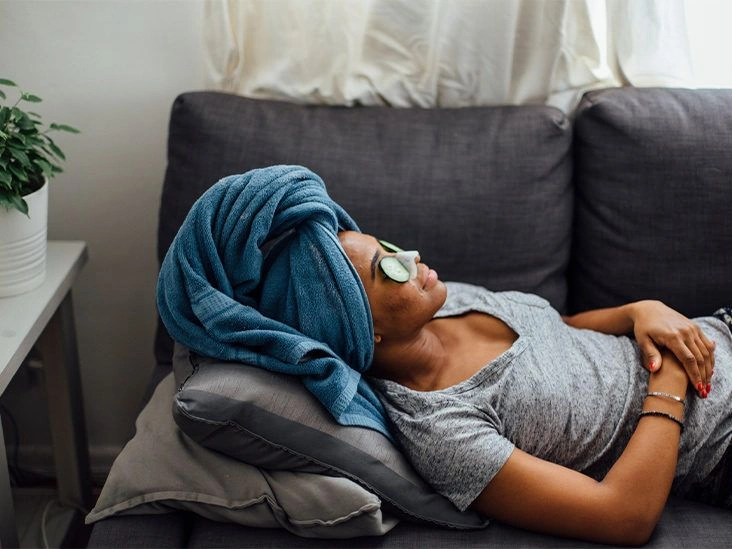Acne appears in a variety of forms, and one familiar type many people see from time to time is the blackhead.
Known as an open comedone, this noninflammatory acne lesion is commonly addressed with exfoliation and extraction methods. You’ve likely seen adhesive nose strips marketed to pull them out.
But are those strips doing more damage than benefit? Before you stick one on, let’s examine the facts.
:max_bytes(150000):strip_icc()/pore-strips-test-peace-out-oil-absorbing-treatment-jthompson-0035-6629dabcdef54800beb80b9d0fe94157.jpg)
Do they truly harm your skin?
Sadly, rigorous research on nose strip safety and effectiveness is limited, which is why you’ll encounter mixed opinions about whether they’re beneficial or detrimental.
Critics argue that strips can remove more than just the visible blackhead — they may strip away sebaceous filaments as well, clearing pores more than intended.
Sebaceous filaments (a term for collections of sebum and dead skin cells) line pores and help maintain normal oil balance, so they aren’t inherently bad.
If these filaments are removed, pores might be left exposed and vulnerable to irritating debris and oils.
Can they extract blackheads?
They can indeed.
An older study showed that strips effectively pull out blackheads.
That said, the benefits are short-lived. The extracted material tends to return within a few weeks.
Success also depends on correct use: the adhesive needs moisture to activate, so following the wetting step is essential.
For optimal results, adhere to the product’s instructions.
Do they shrink pores?
First, understand that pores can’t truly be eliminated.
Pores perform vital roles: they house hair follicles, collect oil, and release sweat.
Although you can’t remove pores entirely, nose strips may temporarily make pores look less noticeable.
By taking out the darkened buildup, strips clear the black or brown material that makes pores appear larger.
However, this appearance is fleeting — pores commonly refill over several weeks.
If you plan to use them, follow these precautions
If you still want the quick fix of pore strips, keep in mind they offer temporary blackhead removal while potentially exposing pores to irritating substances.
Here are safe steps to take when using nose strips.
Cleanse first
Wash your face and hands before application. You don’t want to introduce oils or bacteria into open pores.
Use a water-based cleanser with gentle finger motions, rinse, and pat the skin dry — avoid rubbing or causing irritation.
Follow directions
Use the strip exactly as the manufacturer instructs.
Typically this involves wetting your nose, pressing the strip on firmly, then waiting for the adhesive to set.
Leaving it on too long risks removing more than just debris, potentially stripping the surface layer of skin.
Apply at night
If you’re prepping for an event, do the strip the night before.
This gives your skin time to recover overnight and restore natural oils, preventing irritation from makeup, sun, or touching the area.
Use noncomedogenic follow-up products
After removing a strip, continue your routine with noncomedogenic items that won’t clog pores.
Lightly apply a gentle moisturizer.
If you’re worried about pores refilling quickly, consider an anti-acne treatment before moisturizing.
Other approaches to consider
Although nose strips give immediate gratification by pulling out blackheads, there are safer, often more effective alternatives for treating blackheads and reducing pore appearance.
Below are several options to explore.
Methods for removing blackheads
Apart from nose strips, extractions come in various forms.
At-home peel-off masks are similar to strips: they stick to the skin and remove trapped material when peeled away.
Keep in mind the same skepticism exists around their long-term value; more study is needed.
Professional extraction is another route. Performed by a dermatologist or aesthetician during a facial or clinic visit, this involves a loop extractor gently pressing at the skin surface to remove the clogged material.
It’s best left to trained pros — attempting manual extraction at home can cause scarring or force the blockage deeper into the skin.
To prevent blackheads, use noncomedogenic skincare and cosmetics and avoid excessive friction or touching of the skin. Overwashing can also irritate and worsen oil production.
Beyond topical care, supporting skin health from within helps: maintain a balanced diet to avoid blood sugar spikes that can stimulate oil production.
Ways to reduce pore visibility
The American Academy of Dermatology outlines strategies to make pores look less obvious.
Begin with a consistent skincare routine: cleanse twice daily with warm water and a gentle, noncomedogenic cleanser.
Incorporate a mild exfoliant once or twice weekly.
For acne-prone skin, topical retinoids or retinyl palmitate can help; apply them at night to minimize sensitivity.
If you’re pregnant or nursing, consult your doctor before using retinol, as it may not be appropriate.
Sun damage can accentuate pores, so use a broad-spectrum sunscreen of at least SPF 30 daily.
Finally, choose makeup labeled “noncomedogenic,” “oil-free,” or “won’t clog pores” to avoid emphasizing pore appearance.
The takeaway
In summary, while nose strips can extract blackheads, they’re not necessarily the ideal option for your pores.
More comprehensive research is needed to fully determine their safety.
If you opt to use strips, strictly follow the product directions and take precautions to avoid skin damage.
If blackheads persist or become inflamed, consult a dermatologist. They can advise on professional extraction, prescription topicals, or a tailored skincare routine to improve your skin over time.


















Leave a Reply
You must be logged in to post a comment.